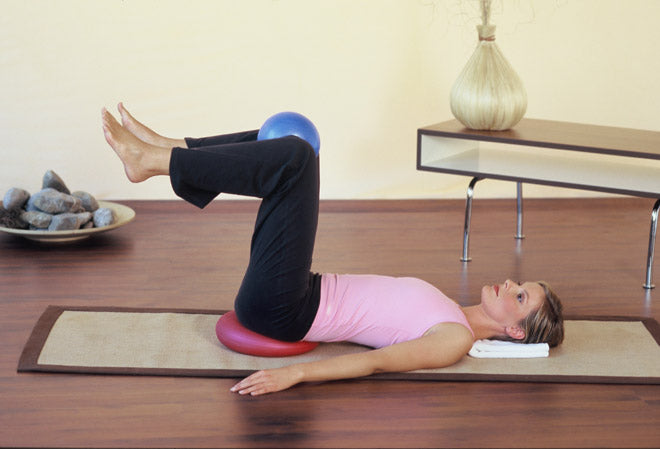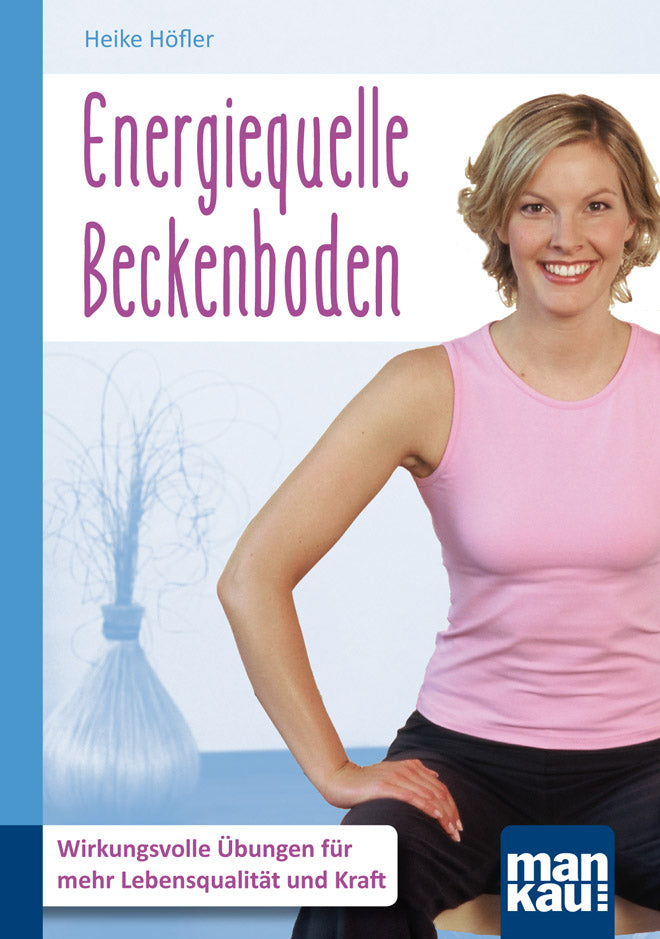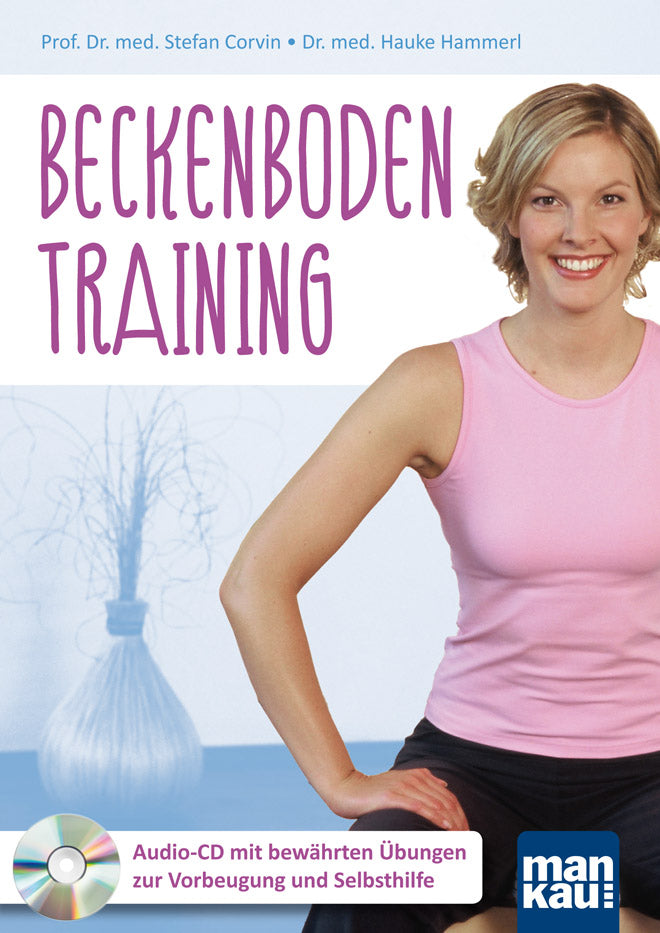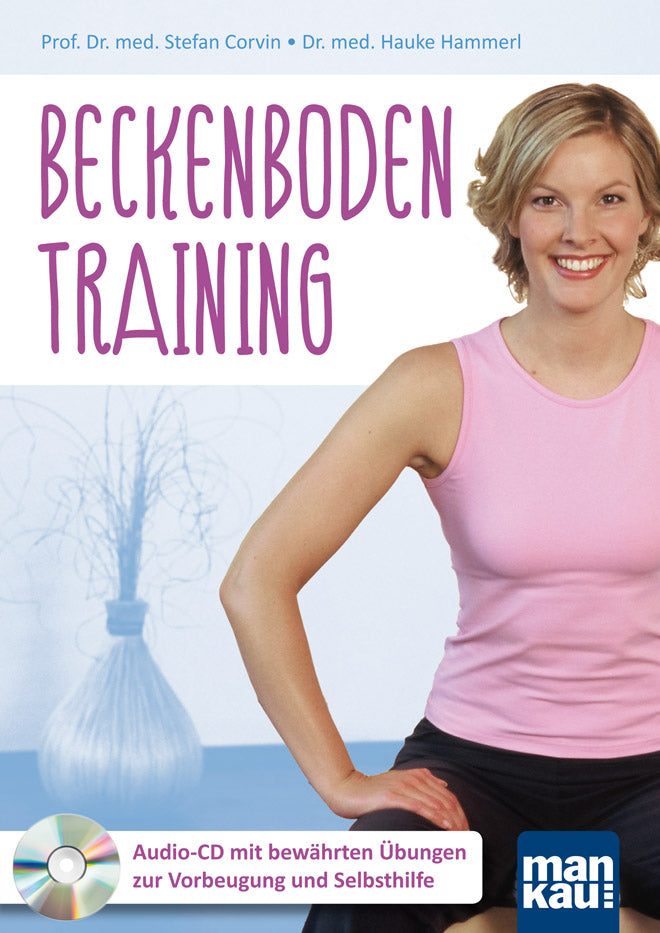
Pelvic floor training for a better quality of life
Pelvic floor training for a better quality of life
Compact guide and audio CD present proven exercises to strengthen the energy center in the middle of the body
The pelvic floor is a network of muscles, ligaments and connective tissue that ensures an upright posture and the stability of the organs. Targeted exercises have a positive effect on the urogenital organs and prevent bladder weakness, but are also suitable for self-help in the case of urinary incontinence and other problems.
More strength, more self-confidence, more desire
The pelvic floor, which for a long time was neglected and taboo, has become an insider tip for lasting gains in life and pleasure. As the foundation for the back and posture as well as all internal organs, the muscle group influences the uterus and prostate and is responsible for the closing function of the bladder and intestines. It is therefore the basis for femininity and masculinity, ensures greater sexual sensitivity and potency and, through regular training, conveys a feeling of greater strength, security, vitality, increased self-confidence and a much more positive attitude to life.
The compact guide "Pelvic floor as an energy source" by the experienced sports and gymnastics teacher Heike Höfler and the audio CD "Pelvic floor training" by the two urologists Prof. Dr. med. Stefan Corvin and Dr. med. Hauke Hammerl provide information about the anatomy and function of the pelvic floor and show a variety of awareness and strengthening exercises to gain full control over the pelvic floor muscles and noticeably increase well-being. "Experience more energy, strength, psychological well-being and fulfilling sexuality through the power muscle," advises Höfler.
Why pelvic floor training?
There are many reasons to do regular pelvic floor exercises, because the pelvic floor is a fundamental muscle with fundamental functions. It ensures an upright posture, deeper breathing, good venous return from the legs and is considered the ultimate pleasure muscle in the sexual area. However, it provides not only physical but also psychological support. It greatly strengthens self-esteem and body awareness and provides inner and physical security.
However, this important muscle is often weakened, lacking energy and tension. The first cause is inherited, weak connective tissue. In this case, it is particularly important to start pelvic floor exercises at a very early age. Overweight and obesity are another risk for weakening of the pelvic floor. In addition, any pressure from above places a great strain on the pelvic floor. This can be a chronic cough, but also lifting and carrying heavy loads.
Pregnancy poses a particular challenge for this muscle area, as the tissue stretches enormously during childbirth. The hormonal changes during menopause can also weaken the pelvic floor, leading to bladder or uterine prolapse and incontinence.
Effect of pelvic floor training
The effects of pelvic floor training are diverse. One of its main tasks is to prevent and resolve incontinence problems, but this is by no means the only task. The pelvic floor holds and supports the internal organs and the lower back, which is of enormous importance for pain patients and athletes. The pelvic floor also keeps the sexual organs in a good state of tension. It is the centered center that gives people support, security, stability and a sense of groundedness. A good tone of the pelvic floor gives the whole body firm muscle tension, but also a relaxed, uninhibited demeanor. It also provides stability on a mental level and contributes to psychological well-being. The vital energy of the human body is also rooted in the pelvic floor. And the exercises intensify sexual sensation and deepen the feeling of pleasure in men and women well into old age.
In order to be able to practice accurately and effectively, it is extremely important to know the anatomy of the pelvic floor and its position, as Heike Höfler explains in her handy compact guide. However, the pelvic floor exercises can be easily integrated into everyday life, and even those in a hurry and working people can use the audio CD by Corvin and Hammerl to complete a shortened training program on working days that only takes about seven to eight minutes.
Book tip:
Heike Höfler. Pelvic floor as a source of energy. Compact guide. Effective exercises for more quality of life and strength. Mankau Verlag, 1st edition October 2017. Paperback, full color, 11.5 x 16.5 cm, 127 pages. €8.99 (D) / €9.20 (A), ISBN 978-3-86374-420-5.
CD tip:
Prof. Dr. med. Stefan Corvin and Dr. med. Hauke Hammerl. Pelvic floor training. Tried and tested exercises for prevention and self-help. Mankau Verlag, 1st edition October 2017, 1 audio CD with 20-page booklet, total running time approx. 65 minutes, €12.95 RRP (D/A), ISBN 978-3-86374-419-9.
Link recommendations:
More information about the guide "Energy source pelvic floor"
To the reading sample in PDF format
More information about the audio CD "Pelvic Floor Training"
More about Heike Höfler
More about Prof. Dr. med. Stefan Corvin
More about Dr. med. Hauke Hammerl










